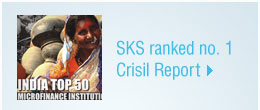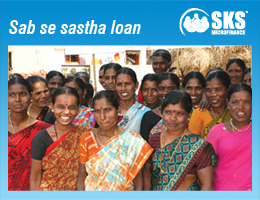
|

 Financial inclusion which means the availability of affordable basic financial services like banking, insurance to all, has been long on the agenda of successive governments in India. Time and again the government has taken steps to facilitate this. The nationalisation of major private sector banks in 1969 was the first major initiative in this direction. In 1975, the government set up Regional Rural Banks and today we have 14,475 rural banks in the country of which 2126 (91%) are located in remote rural areas. The government also introduced banking guidelines that require banks to extend 40 percent of their net bank credit to priority sector. In more recent times, it has eased KYC norms and introduced no-frills savings account for six million low-income families across 155 districts. However, as a nation we still have only 34 percent of our population that has access to banking services. A recent IFMR study shows that a significant percentage of the no-frill accounts , once opened, are neither accessed nor operational. The main reason for financial exclusion is the lack of a regular or substantial income. In most of the cases people with low income do not qualify for a loan. The proximity of the financial service is another fact. The loss is not only the transportation cost but also the loss of daily wages for a low income individual. Most of the excluded consumers are not aware of the bank’s products, which are beneficial for them. It is very difficult for a low income individual to find collateral for a bank loan. Moreover, banks give more importance to meeting their financial targets. So they focus on larger accounts. It is not profitable for banks to provide small loans and make a profit.  Microfinance institutions which have a network across low-income groups in the country and a proven method of successful operation, would be the ideal vehicles for banks to achieve their financial inclusion goals. Using the Business Correspondent and business facilitator models, banks can reach out to these sections with very little risk and without incurring huge operational costs. MFIs, due to the section of people they work with and the hiring policies they follow, end up creating a significant social impact. By lending solely to women, they influence the social equations within the basic social unit of the family. Once women begin contributing to the family income, they start playing a more significant role within the family and become part of decision-making. On a larger scale, since MFIs lend to the economically disadvantaged sections, they end up lending to a larger number of Scheduled Castes, Tribes and Backward Communities. Since they hire staff from the sections they serve, they also provide employment opportunities as well amongst these Communities.  Over the last decade, SKS has established its operations across 341 districts in 19 States out of which 315 have been identified by NREGA as the poorest. SKS services reach out to millions of poor – including Backward-Scheduled Castes. Approximately 57.3% of our members belong to the “weaker section” of Indian society. Amongst our employee base, many of them belong to Backward Castes and Scheduled Castes. Many of our employees are children of our members. |












